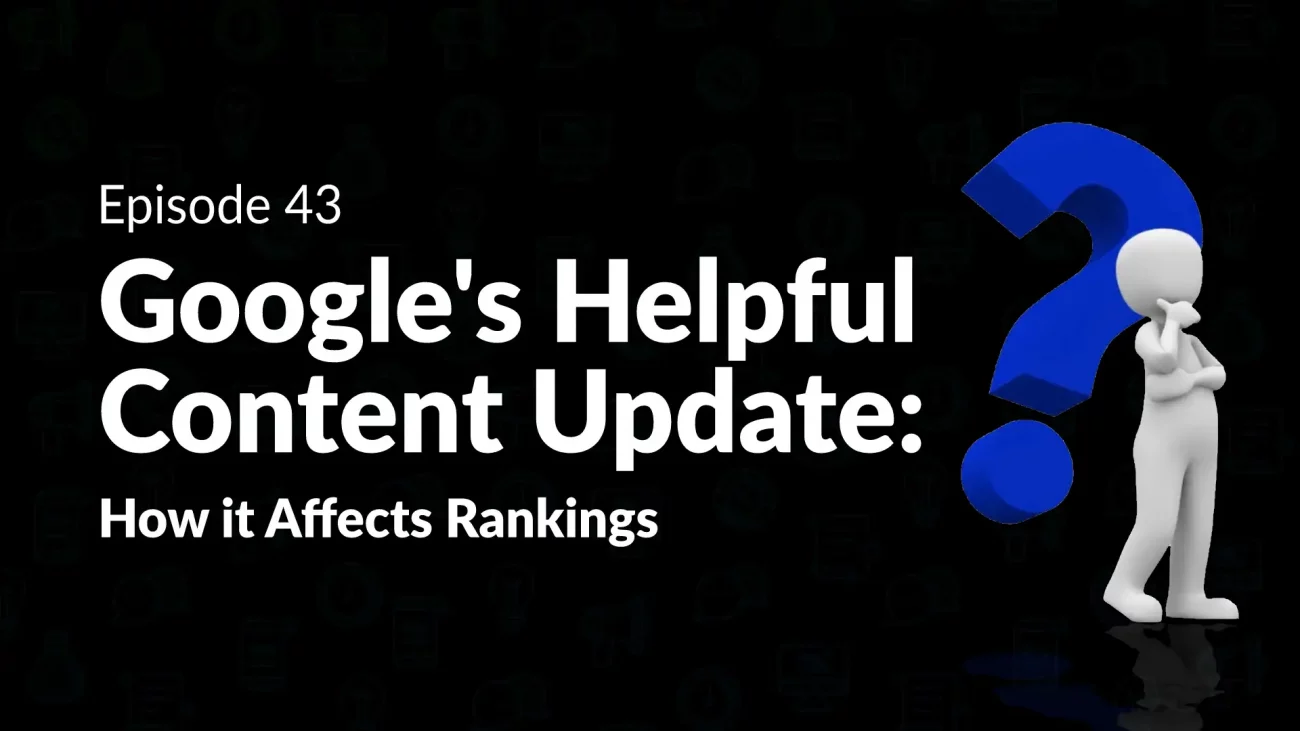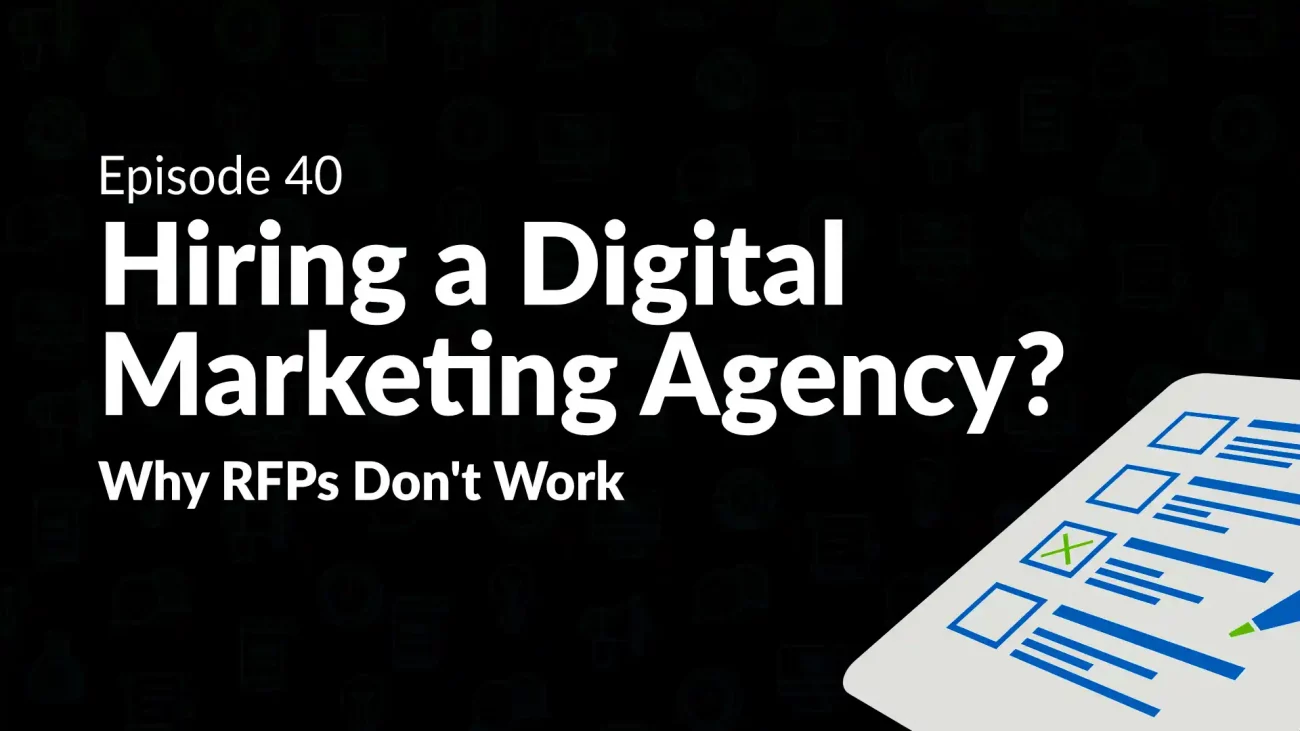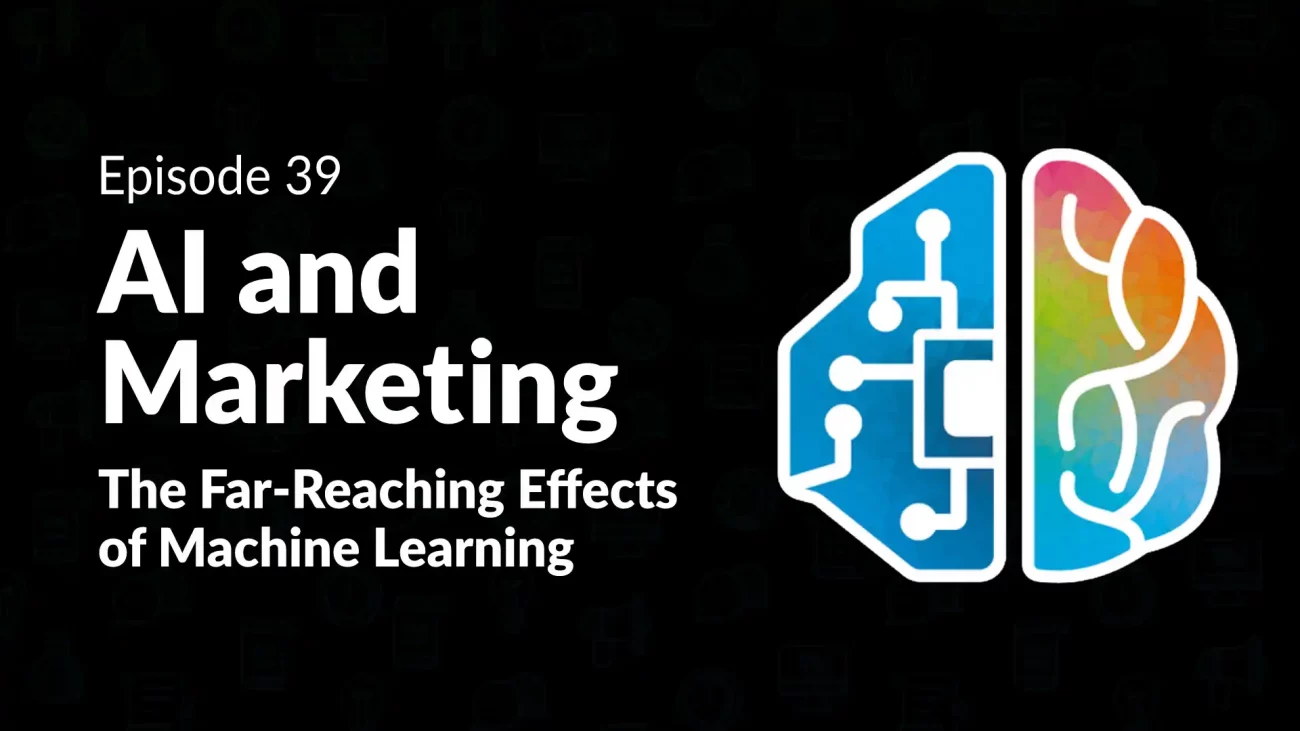Episode 25: Digital Marketing Insights: Why Your Marketing Reports are Useless
What use do you have for a 15 page report on your digital marketing initiatives? Not much. All reputable marketing agencies will provide reports on the state of your marketing on a regular basis. The point many agencies miss is that clients have no clue what to do with most of this data. The real benefit of a report is not metrics and numbers, but the insights and guidance an agency can provide based on and alongside your data. If your agency is not providing insights and actionable items from your data, you are being kept in the dark.
In this week’s Digital Marketing Mondays, Hans and Devin discuss why data insights matter more than the data itself and how so many agencies miss the opportunity to truly inform their clients on the state of their digital marketing campaigns.
Transcription:
Devin:
You’re listening to Digital Marketing Mondays. Each week, we bring you new and exciting content from around the marketing industry and help give you, the marketer, insights into what’s happening. We’ll offer our advice and share some takeaways to help you to develop better strategies for your marketing. Ideally, this will also help you improve your ROI as well. So with that, let’s tune into this week’s episode.
Hans:
How you doing, Devin? I got a thought for today.
Devin:
Okay.
Hans:
Have you got anything in mind?
Devin:
Yeah. I think talking about data, and particularly insights that companies may or may not receive from their marketing department or their vendors. Probably a good thing to talk about.
Hans:
Yeah. Let’s dive into that. That’s what I was thinking. I wanted to start with a famous quote. There was a merchant and an industrialist named John Wannamaker in the 1800s. He was a retail merchant, and he had a quote which has been also attributed to someone from England. Basically it goes like this, “Half the money I spend on advertising is wasted. The trouble is, I don’t know which half.”
Devin:
Famous quote. I love it.
Hans:
Famous quote. It’s an interesting one, because it’s still difficult. Digital marketing has definitely made it easier for us to figure out which part of our advertising is working, but there’s a lot of ways that things can go wrong. I wanted to talk about one particular way today. To set the table for you, I’ll tell you a little story that seems to have repeated itself multiple times during my career. That’s when I’m sitting down with a prospect who may or may not already be doing digital marketing, perhaps they’re doing running ads on Google and Facebook. They’ve got an agency helping them, but things aren’t going as well as they should be, so they’ve called me in for a meeting.
Hans:
I sit down from them across the table, and we’re talking about the various things that they’re doing. At some point they go, “Hey, would you like to see the monthly report that we get from our agency?” I go, “Sure.” They push this 15 or 20 page stack of paper across the table to me. I look at it, and it’s just a bunch of data, really. I say to them, “Is this helpful to you, do you know what this means?” They go, “Well, actually, no. We don’t know what any of it means. We were hoping you could explain it to us.”
Hans:
I go, “Well, I can explain some of it to you, but a lot of this is just really down to data around individual keywords. It’s just meaningless to you. It’s important, I guess, if you’re doing the ads yourself. But since you’re outsourcing this, what you really want to know is, what’s working? What’s not working? What are the insights from this? Am I attracting the kinds right traffic? Or, am I attracting people that are probably not my target audience? Am I putting the people in front of the right messaging? There’s a lot of ways that digital marketing can go off the rails, and your data can tell you that if you have the right data.”
Hans:
First of all, it has to be accurate. If you’re making a mistake in the way things were set up, and your data isn’t good, then that’s a problem. But assuming your data is good, then drawing the conclusions and the insights from that data, that’s where the value really lies. What’s working well? What’s not working? Which part of my advertising is working?, to quote John Wannamaker. Then what do you do about the part that isn’t working? Do you just shut it down? Or do you figure out what’s wrong with it, and improve it? I wanted to talk to you a little bit about the tools that are out there, and what people can do so that they get meaningful insights that are actionable, instead of just a deluge of data from their agency.
Devin:
Yeah, absolutely. There’s a couple different parts there. I think, first and foremost, you have to think about the data that you’re actively collecting. Now clearly, in this story that you had of receiving this 15 page report, there’s probably no shortage of data there. But simply-
Hans:
Absolutely, yeah.
Devin:
I would assume, anyways.
Hans:
You’re right.
Devin:
Certainly the data, and where it comes from, entirely depends on what you’re doing inside of your marketing program. So that makes a ton of sense, and will vary by organization, of course. But certainly, first and foremost as a marketing org, you need to be thinking about, are you getting all of the data that you possibly could from these different sources? I’m saying, just starting by making sure that you’re collecting the correct information. I’m not saying you’re doing anything with that yet, it’s just a matter of, are you collecting all of that information that you should be? Is it accurate? Is it insightful information? You’re just trying to get to answering those three questions first.
Devin:
But beyond that, that’s when it really requires some thoughtful practice about, what does this information actually mean? Then of course, how is it going to get used? What are things that we can glean from it? In fact, we’re working with a client right now on analyzing video performance data coming out of YouTube. There’s this entire area of, not just the videos themselves and how they’re performing, but also the landing page, and the user-based behavior. Then what’s the externality, or other pieces of information that we can glean from that? As in, how many new leads did it drive? What were the business outcomes of these videos? These are all things that maybe they aren’t currently collecting, and need to be thought of as part of this strategy. So, that’s certainly part of it.
Hans:
Yeah. I think it’s a great point. I studied engineering many, many years ago. There was a principle that was called a signal-to-noise ratio. If you’re dealing with waveform electronics, like radios and things like that, the noise is like the static that you hear. The signal is the stuff you want to hear, the real data. It’s the information that the broadcaster’s trying to get to you. On the way to your device, noise gets introduced.
Hans:
It seems to me that a lot of these reports that I have seen, and this happened not just once or twice, but over and over again, it’s not just a one-time story, where I think the amount of noise was off the charts, and the amount of signal was really tiny. As a matter of fact, if you just stripped away the noise, the signal would be valuable, frankly, such as it was. But because you’ve surrounded it with so much noise, you have to dig around to figure out, what’s the signal? What’s the stuff you want to know? So, by adding all that noise, you’ve really polluted or diluted the value of the signal that’s in there. So just dumping a bunch of data at someone who isn’t familiar with it is worse than not giving them the data at all, in my opinion.
Devin:
Right. Right. I think the most important question that head of marketing departments, CMOs, whoever is asking these types of questions, I think one of the most under-asked questions from these people is, what is our marketing efforts producing for business outcomes? I think that’s a question that so often gets lost [crosstalk 00:06:50].
Hans:
The bottom line, right?
Devin:
Right. That’s the bottom line. Is this marketing effort that you’re doing working? I think you could use all sorts of other data to help support that question and obviously, tastefully, you should, because I think some of it’s reasonable to report on. The number of impressions and clicks that your ads received, probably not too meaningful metrics to look at, unless there was in context of a specific campaign. But it’s amazing to me how often marketers that I’m talking to do not grasp that single question. I think that’s still one of the most important questions to try and be focusing on. In my opinion, all reporting and data should be pointing towards trying to help answer that question. Obviously, it takes some sound bullet points to help explain how we got to achieving that goal or not, but I think that’s one thing that’s often overlooked, and probably the most profound question that you should be thinking about.
Hans:
Yeah, absolutely. There are situations where someone may be buying market share, so they’re going into this thing deliberately losing money on individual sales, but they’re actually really going to make it up in volume because once they start getting some market share, they’re selling add-on products. Whatever the business model that justifies it, you don’t always make money from the get-go when you start doing digital advertising. In fact, many times you have to trial and error a few things before you get it to work. That’s normal. But once you get the process running, and it’s the ongoing process, you should be making money with it eventually, or else you’re doing something wrong. That’s the bottom line. I think you’re absolutely right. I think that’s what things should point to.
Hans:
We should also point out that there’s a lot of great tools out there for measurement and reporting of data. We’ve talked earlier about the fact that Google Analytics is coming out with a new version. If you haven’t heard about Google Analytics number 4, you should go back and read our blog post or listen to the podcast on that, because I think that’s going to be key. There’s things you should do today to prepare yourself for that. Again, the data we have today is much better than what John Wannamaker had back at the turn of the 20th century. But nevertheless, we probably have more data than John Wannamaker had and that can in itself be a problem if the nuggets of signal that you want are buried in too much noise. So the lesson today is, makes sure that wherever you’re getting your information from, it’s boiled down to just the facts, man, because that’s where the rubber meets the road.
Devin:
Absolutely.
Hans:
Thanks, Devin. It’s been a good conversation. Catch you next time.
Devin:
Yes. Sounds good. Thanks, Hans. Thank you so much for tuning in. We really appreciate you taking the time out of your busy day to engage with our content. Whether you’re watching on YouTube, or subscribed on our podcast apps, we appreciate you taking the time. Make sure to leave a comment down below and let us know any feedback that you have for us. We’re always watching the comments and engaging in any way that we can. So if you find this content useful, also make sure to subscribe, or give it a big thumbs up. We appreciate it. Thanks so much.









